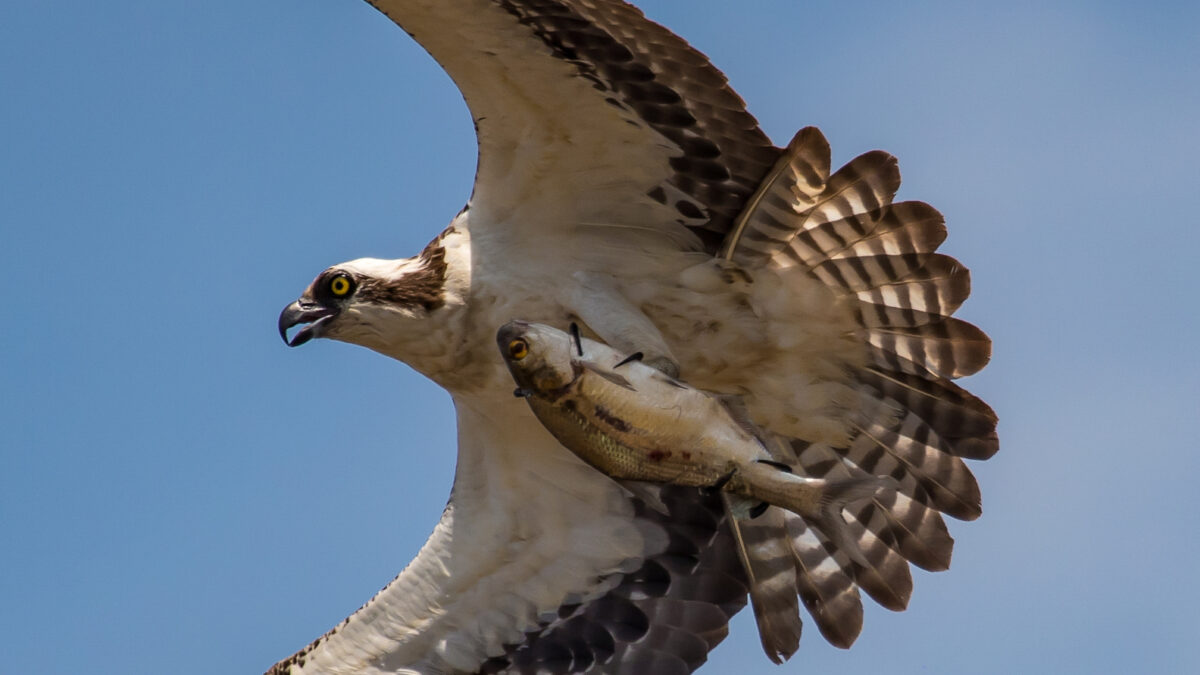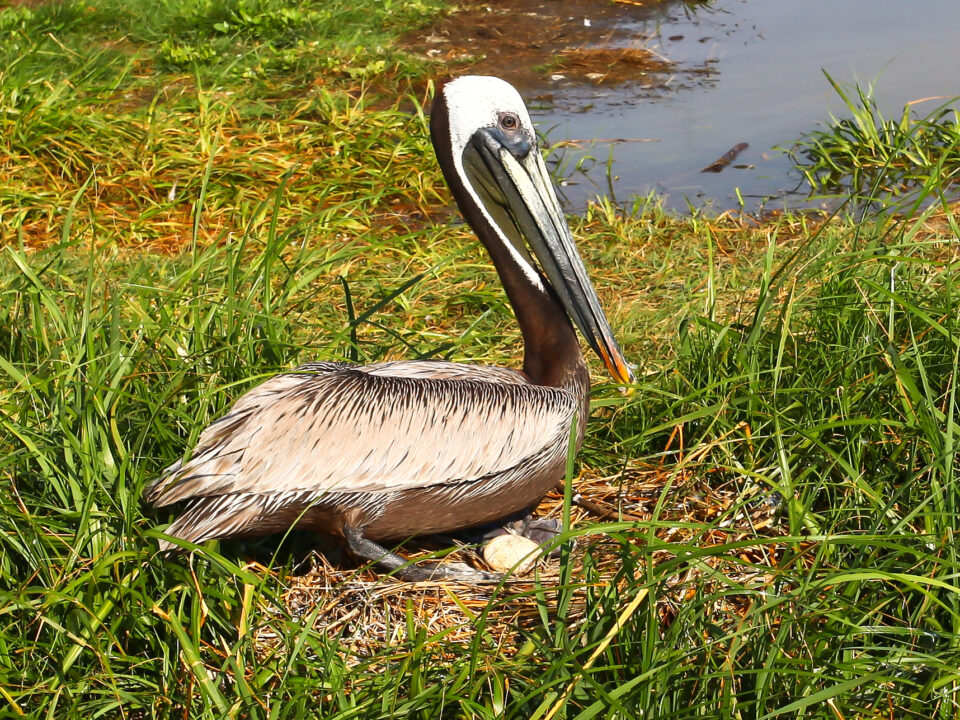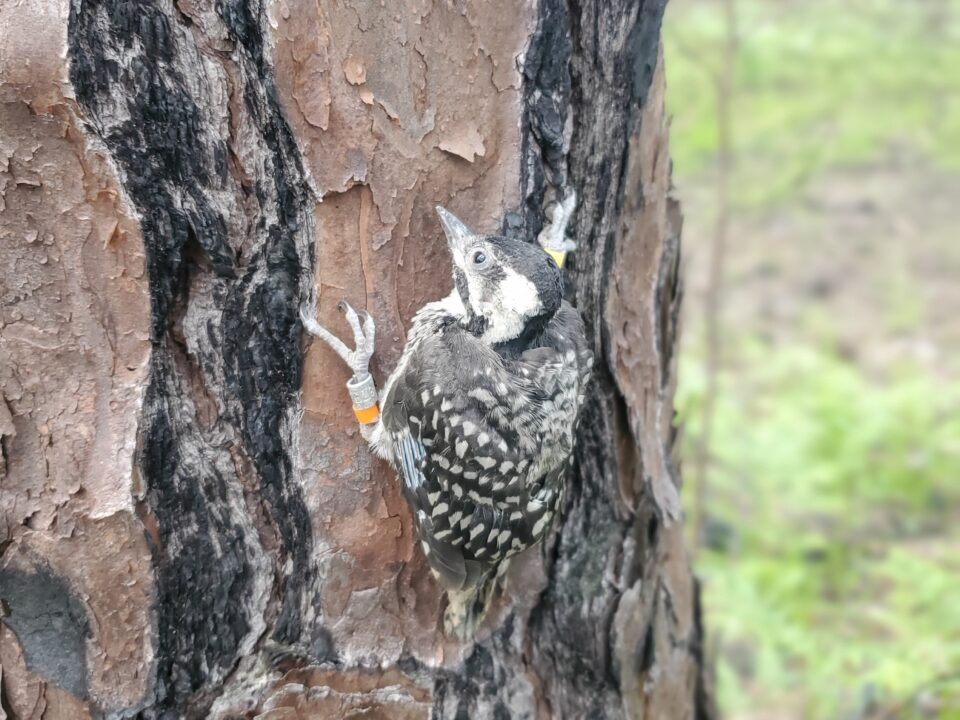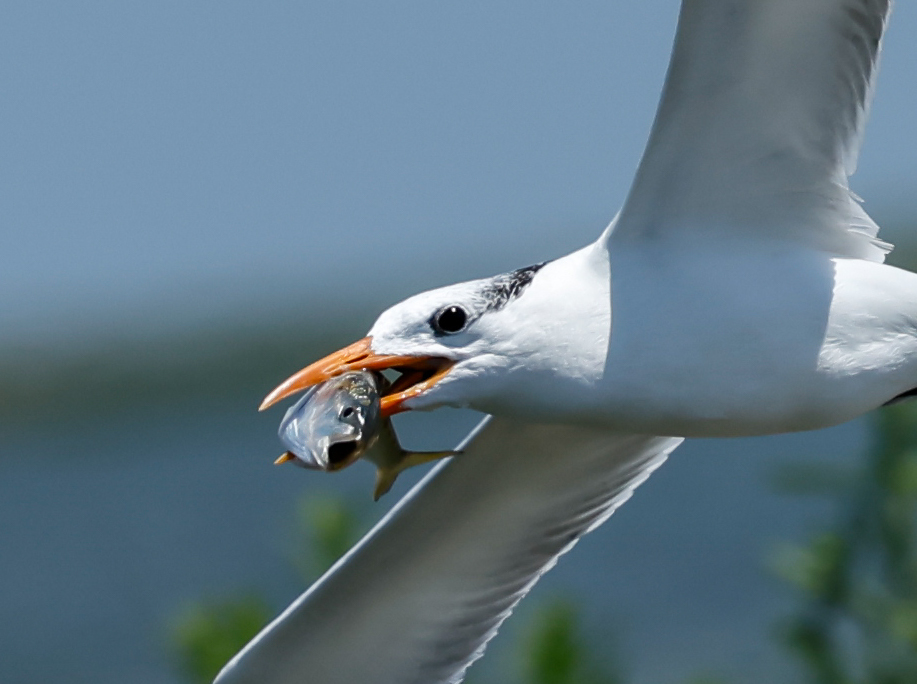Deficit in breeding performance expands for Chesapeake Bay ospreys

Recent Literature published by CCB
July 2, 2025
Tracking Whimbrels Through Emerging Threats
October 8, 2025News Advisory
FROM: The Center for Conservation Biology, William & Mary
FOR IMMEDIATE RELEASE: 29 September, 2025
MEDIA CONTACTS:
Dr. Bryan D. Watts, Director
Center for Conservation Biology
William & Mary
bdwatt@wm.edu
(757) 221-2247
BRIEF
(Williamsburg, VA)— The Center for Conservation Biology at William & Mary has compiled 2025 breeding performance results for osprey in the Chesapeake Bay. The monitoring effort included 1,025 osprey pairs distributed among twenty-three study areas. Study areas were distributed across the salinity gradient, from tidal-fresh waters near the fall line to ocean-strength waters around the mouth of the Bay. The primary objective for the 2025 nesting season was to assess reproductive rates and evaluate the stability of the Bay-wide osprey population based on patterns observed. Breeding pairs were monitored throughout the nesting season (March-August) to determine nesting success and productivity.
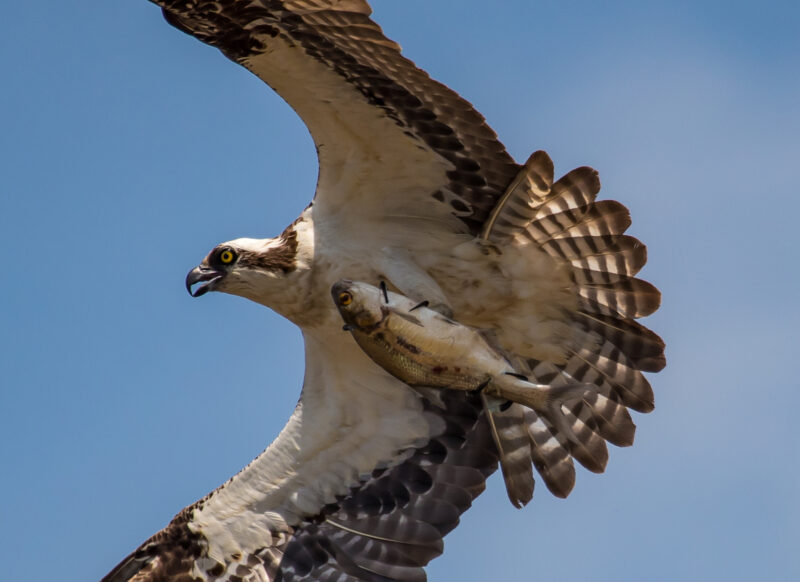
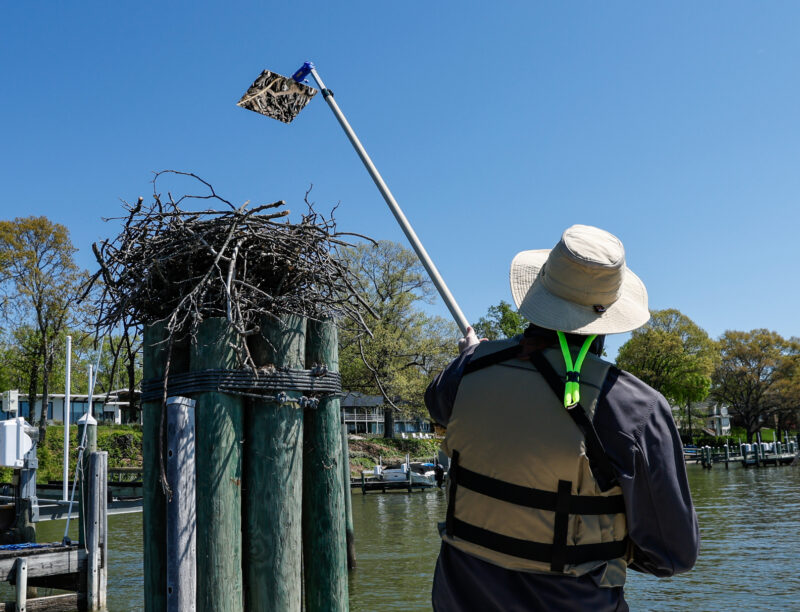
In 2025 osprey breeding performance varied with salinity. Average productivity was 0.25 young/pair for high salinity (>18 ppt salinity), 0.31 young/pair for moderate high salinity (12-17.9 ppt), 0.4 young/pair for moderate low salinity (5-11.9 ppt) and 1.0 young/pair for low salinity (<5 ppt) study areas. For ospreys worldwide, the annual breeding performance estimated to be required to maintain a stable population ranges from 0.8 to 1.3 young/pair. Only low salinity study areas reached the minimum threshold with all five sites producing greater than 0.8 young/pair. None of the 18 study areas in waters above 5 ppt reached this minimum productivity threshold. Collectively, pairs nesting in waters above 5 ppt produced an average of 0.33 young/pair. Seventy-four percent of pairs (N = 741) nesting in these waters failed to produce any young.
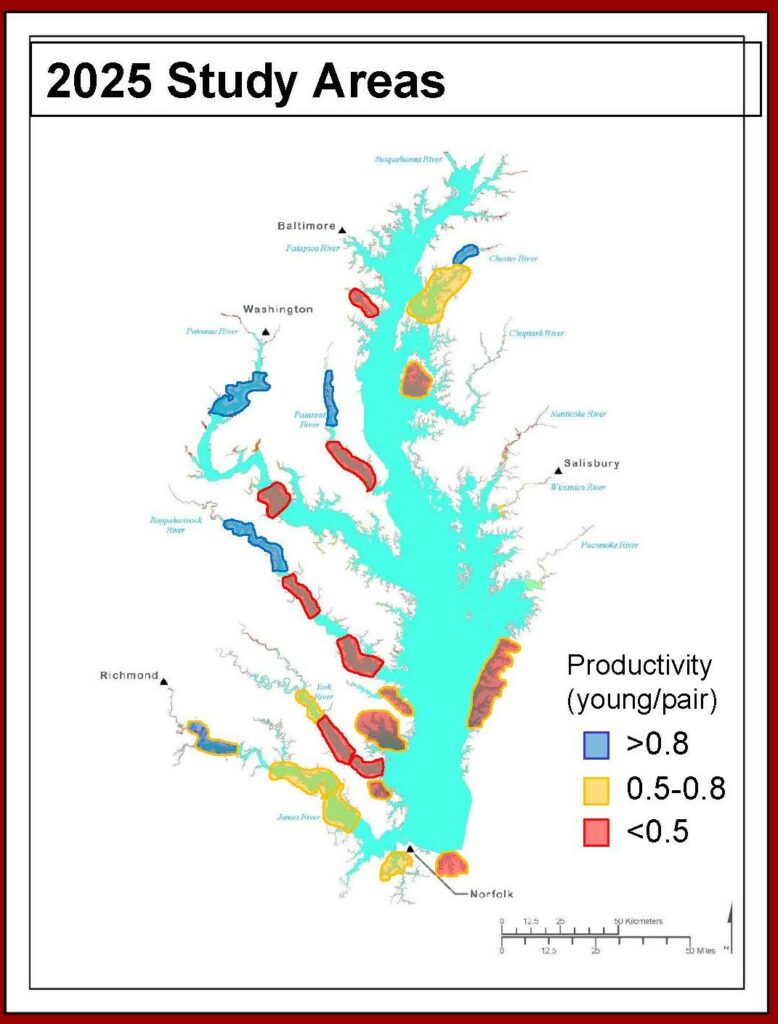
Based upon direct observations during nest visits, the largest contributing factor to poor breeding performance was seemingly the loss of young likely due to starvation. Low food availability leads to a sequential loss of young and results in smaller brood size or nest failure. One of the best indicators of food stress in Chesapeake Bay ospreys is the frequency of single-chick broods in the population. Of all broods produced within waters above 5 ppt (N = 195) 67% were single-chick broods and 10% were two-chick broods. In contrast, 54% of successful pairs (N = 115) in low salinity waters produced two-chick broods. On average, pairs nesting in higher salinity waters lost 1.62 young between hatching and fledging compared to only 0.57 young for pairs in low salinity waters.
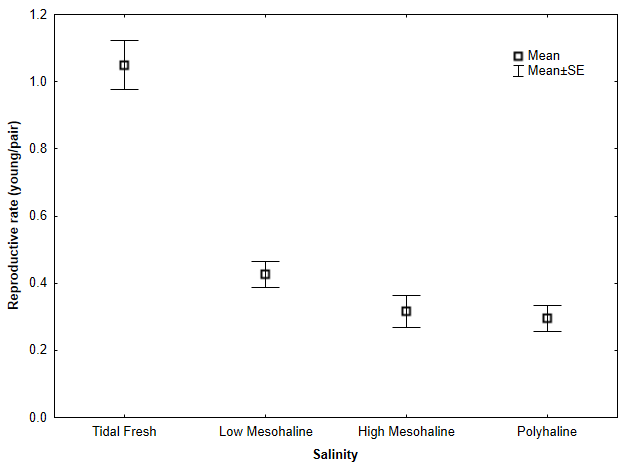
The osprey breeding performance documented in higher salinity waters in 2025 is not high enough to sustain the osprey population in the Bay. Over the past several years we have determined that pairs nesting in waters above 10 ppt were producing too few young to sustain their population without immigration from elsewhere. The major finding in 2025 is that the reproductive deficit is not restricted to the 10 ppt salinity contour but extends up tributaries to the 5 ppt contour. This contour includes more than 80% of the surface waters of the tidal Chesapeake.
One of the central questions addressed in 2025 is whether or not the surplus production in low salinity waters is enough to offset the deficit in higher salinity waters. If we consider the minimum (0.8 young/pair) production threshold for stability, the 2025 results suggest that in order for the Bay-wide population to be stable we would need 1.8 pairs in low-salinity waters (area of surplus) for every pair in high-salinity waters (area of deficit). Unfortunately, we have the opposite pattern. During the last systematic survey of the Chesapeake Bay osprey population (1995-1996) there were 7.5 pairs within the area of deficit (high-salinity waters) for every one pair in the area of surplus (low-salinity waters).
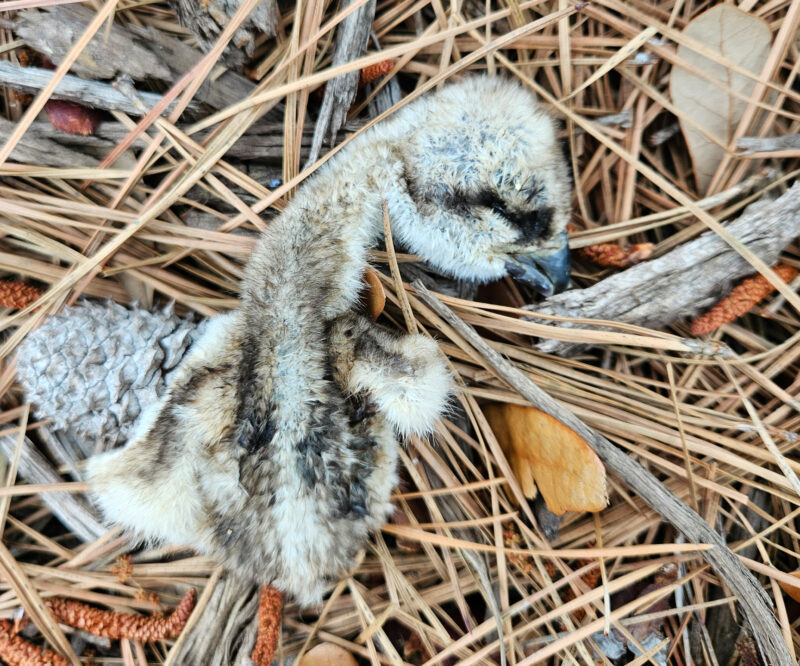
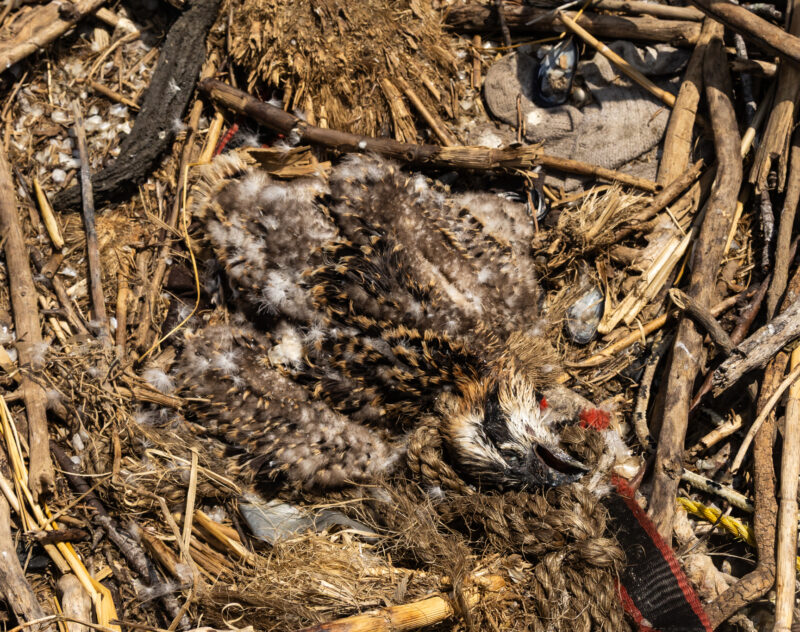
If the breeding performance observed over the past several years continues, the Bay-wide osprey population is predicted to decline. In many areas this decline has likely been ongoing for at least several years. Our expectation is that declines will vary across the Bay. Osprey pairs in low-salinity waters are self-sustaining and may continue to increase. The number of osprey pairs in high-salinity waters with consistent production below 0.1 young/pair are expected to show the most rapid and pronounced declines.
ADDITIONAL DETAILS
2025 Objective
In recent years we have published papers on the historic decline of osprey breeding performance in Mobjack Bay (a subestuary of the lower Chesapeake) and the role of menhaden in driving the decline. One of the criticisms of this early work is that “Mobjack Bay only reflects conditions within a small area of the larger Bay” and is not representative of the entire Bay. In 2024, we collected reproductive data in ten study areas throughout the main stem (>10 ppt) of the Bay where ospreys are believed to be menhaden-dependent and two study areas within low salinity (<5ppt) reference sites where osprey depend on catfish and gizzard shad. Results from 2024 showed that early work in Mobjack Bay was not an anomaly as ospreys throughout the main stem of the Bay were suffering unsustainable production most likely due to food stress. The 2024 season also showed that pairs within low-salinity areas were producing above maintenance levels.
The objective of fieldwork in 2025 was to evaluate whether or not the low reproductive rate in the main stem (>10 ppt) of the Bay represents a risk to the broader Bay-wide osprey breeding population. To evaluate the metapopulation dynamics we need to understand the relative magnitudes of reproductive deficits and surpluses across subpopulations.
Study Areas
The study area included the tidal reach of the Chesapeake Bay from the fall line (landward extent of tidal influence) to the Atlantic Ocean. The study area was subdivided into salinity zones to ensure adequate coverage of conditions. Salinity zones included low salinity (0–4.9 ppt), low mesohaline (5.0-11.9 ppt), high mesohaline (12.0–17.9 ppt) and polyhaline (18.0–30.0 ppt). Five to seven sites were selected for each salinity zone based on logistics and the known density of osprey to facilitate efficiency. Specific study areas by salinity zone include low salinity – Upper Chester River, Upper Patuxent River, Upper Potomac River, Upper Rappahannock River and Upper James River, low mesohaline – Lower Chester River, Severn River, Lower Patuxent River, Colonial Beach, Middle Rappahannock River, Middle York River, and Middle James River, high mesohaline – Choptank River Vicinity, Lower Rappahannock River, Piankatank River, Lower York River, Lower James River and Elizabeth River, polyhaline – Bayside Eastern Shore, Mobjack Bay, Lower York River, Poquoson River and Lynnhaven River.
Breeding Performance
During the 2025 breeding season, poor breeding performance was widespread throughout the entire Chesapeake Bay except for low-salinity sites. None of the higher salinity sites reached minimum demographic targets. However, there was considerable spatial variation in performance across study areas with fifteen (83%) of the eighteen study sites within moderate to high salinity areas falling below 0.5 young/pair and five (28%) falling below 0.1 young/pair. The majority of sites did not reach half of the minimum productivity level required for population maintenance. By contrast, all of the low salinity sites were above the minimum productivity threshold.
Comparable to 2024, a large number of osprey pairs did not lay clutches during the 2025 nesting season. These pairs arrived from wintering grounds in a timely manner (late February – early March). We also documented a significant number of pairs that abandoned territories during the height of the nesting season. Some of these birds abandoned viable clutches. Many of these pairs returned to territories in June. This is the first time this behavior has been documented in significant numbers within the Chesapeake Bay population.
Causes of Nesting Failures
Breeding performance was poor for ospreys throughout the Bay during 2025. Weather events including high winds and extended rains caused nest losses and failures throughout the region. For example, within the upper James River study area, where several nests occur on floating buoy markers, high winds tilted buoys enough to pitch active nests into the water, an event that happens infrequently in this area. Breeding performance was lower within the low-salinity areas compared to recent years. Although clutches and broods throughout the Bay were lost to a variety of factors, patterns in breeding performance were driven by the loss of young after hatching primarily due to starvation. A clear indicator of food deficit (stress) within an osprey nest is the development of asymmetric broods where the young differ in size and developmental stage. Asymmetric broods develop when not enough food is delivered to provision all young equally and leads to the formation of a dominance hierarchy within the brood and monopolization of food by dominant young. The appearance of asymmetric broods is a precursor to brood reduction by the sequential loss of subordinate young to starvation.
Asymmetric broods and brood reduction were widespread throughout higher-salinity waters during 2025. On average, pairs in the main stem lost 1.62 young between hatching and fledging. Both the high failure rate of nests and the high frequency of one-young broods for successful nests were driven by brood reduction caused by food stress. In contrast, asymmetric broods were uncommon within low-salinity sites; on average pairs lost only 0.57 young and success rate was relatively high.
Data Contributors
Center for Conservation Biology, William & Mary
Eastern Ecological Science Center, U.S. Geological Survey
Virginia Department of Wildlife Resources
Virginia Aquarium
Maryland-National Capital Park
Elizabeth River Project
Virginia Osprey Foundation
Operation Osprey
Center for Environment and Society, Washington College

